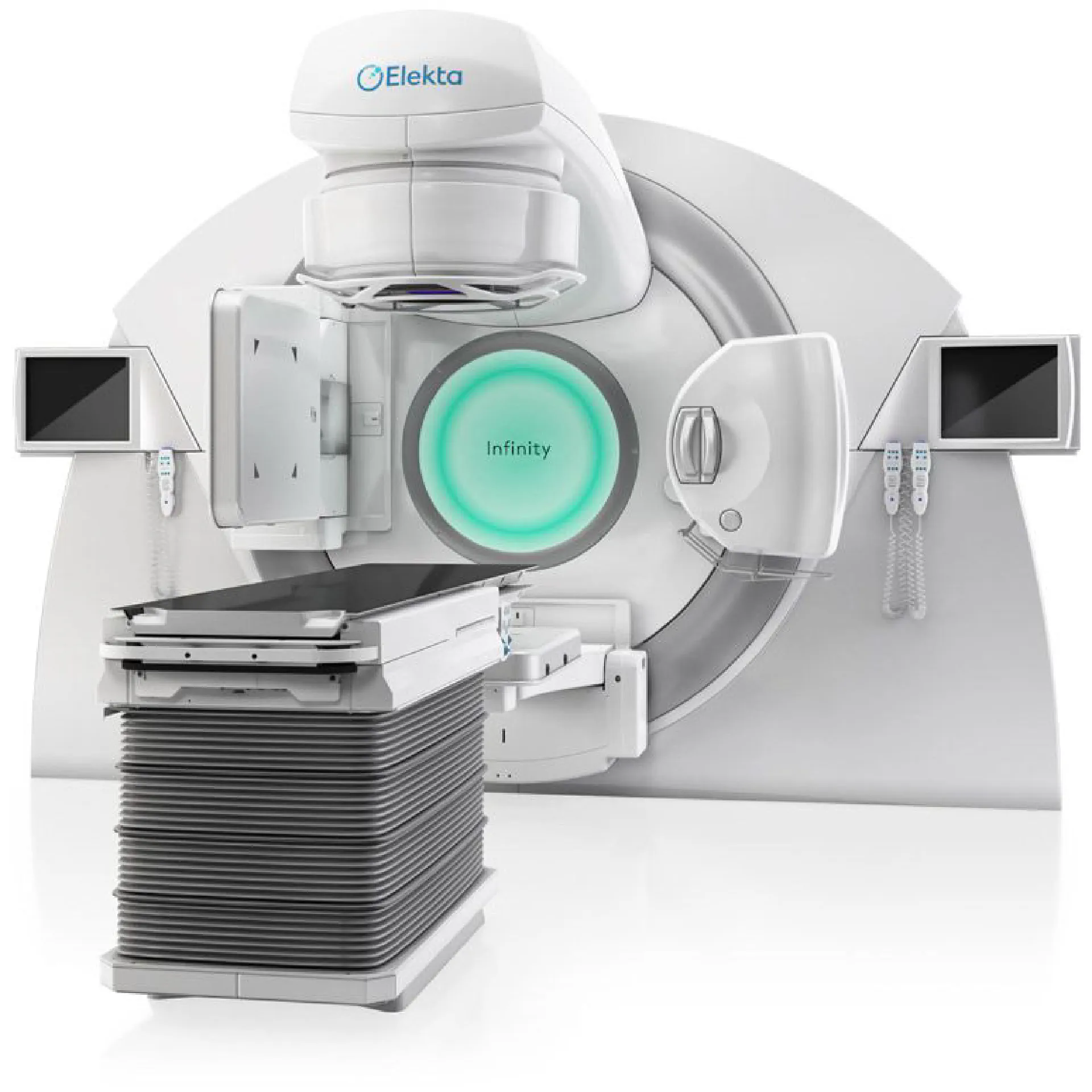Welcome To
Curepoint cancer Care & Treatment
Curepoint Cancer Treatment stands at the forefront of cancer treatment, thanks to its pioneering use of Linear Accelerator-based radiation therapy. By harnessing the precision and versatility of this cutting-edge technology, we are reshaping the landscape of cancer care, offering renewed hope to patients and their families. With a commitment to patient-centered care and a dedication to pushing the boundaries of medical science, Curepoint Cancer Treatment represents a beacon of progress in the fight against cancer.
Technology
The Linear Accelerator
The Linear Accelerator, often referred to as a linac, is a highly specialized medical device designed to administer high-energy X-rays or electrons directly to cancerous cells. This innovative technology is instrumental in the delivery of radiation therapy, which plays a pivotal role in the treatment of various types of cancer. Unlike conventional radiation therapy methods, which may have limitations in terms of precision and targeting, the Linear Accelerator allows for unprecedented accuracy and customization in the delivery of radiation.

Treatment
Advanced Radiation Therapy
Here at Curepoint Cancer Treatment, we utilize advanced technology from Elekta Synergy. This all-digital radiation treatment system enables us to deliver faster, more accurate treatments, all by using the least amount of radiation to minimize the impact on healthy tissue.
Curepoint Cancer Treatment employs state-of-the-art techniques in radiation therapy, facilitated by the Linear Accelerator. Here are some key features and benefits of their advanced approach:
Volumetric Modulated Arc Therapy (VMAT)
VMAT is an advanced form of IMRT that allows for continuous adjustments of the radiation beam's intensity and shape as it moves around the patient. This dynamic technique significantly reduces treatment times while maintaining exceptional precision.
Intensity-Modulated Radiation Therapy (IMRT)
IMRT is a sophisticated technique that enables the adjustment of radiation intensity across different parts of the treatment field. This customization allows for a higher dose to be delivered to the tumor while minimizing damage to adjacent healthy tissues. It's particularly beneficial for tumors located near critical structures.
Image-Guided Radiation Therapy (IGRT)
IGRT integrates real-time imaging capabilities with the radiation delivery process. This ensures that the treatment is precisely directed at the tumor, minimizing exposure to surrounding healthy tissues. The Linear Accelerator's ability to adjust in real-time based on imaging feedback allows for unparalleled accuracy.

Patient-Centered Care
Curepoint Cancer Treatment places great emphasis on providing holistic care that centers around the well-being and comfort of the patient. The use of the Linear Accelerator is seamlessly integrated into a comprehensive treatment plan that considers individual needs, preferences, and medical history. Curepoint Cancer Treatment's team of dedicated oncologists, radiation therapists, and support staff work collaboratively to ensure that each patient receives the highest standard of care.

FAQs
What will happen when the treatment is finished?
The immediate side effects of the treatment described above will start to ease off within a week or two of the end of your course. Because of the way radiation therapy works, the full benefit of the course of treatment is not usually reached until some weeks after the last treatment session.
How long is each treatment session?
The length of a treatment session can be anything from five minutes to fifteen minutes. Occasionally a session may take longer, but this will be explained on an individual basis. When you come for your first treatment your radiation therapist will tell you how long each session will take.
How long will the course of treatment last?
Your radiation oncologist will tell you this once the appropriate treatment for you has been decided. A course can last for anything from a single treatment to five treatments a week for six weeks depending on a number of factors, e.g. the part of your body being treated and the aim of the treatment. Most treatments are carried out daily between Monday and Friday.
Will the radiation therapy hurt?
No. The treatment is completely painless. Radiation cannot be seen or felt while it is being given.
How is radiation therapy given?
Radiation therapy is given using a machine called a linear accelerator or, for some skin tumors, a superficial x-ray unit. To receive the radiation therapy, you will lie on a couch under the machine, and be asked to remain still during the actual treatment.
Will I have any tests during treatment?
During your course of treatment, you may need to have occasional blood test and/or urine test, depending on the part of your body being treated. Some people also have X-rays and/or scans during their course of treatment, which is part of the routine and nothing to worry about.
How is the treatment planned?
Every course of radiation therapy is designed to suit the particular needs of the person receiving it, so you will usually be asked to make a preliminary visit to the treatment center to have your course of treatment planned. The radiation oncologist and radiation therapists will do this (in conjunction with x-rays and scans, using a machine called a simulator). Your skin will be marked with colored pens to define where you will have your treatment. In addition, some minute permanent marks will be made using a special dye and a tiny pin prick.
These marks will enable the radiation therapists to identify exactly the right area at every treatment session. If a head shell has been made for you the guidance marks will be put on the shell rather than on your skin.
If you are having radiation therapy to your mouth and/or throat you will need a dental assessment at this stage as you may require some dental treatment before you start your radiation therapy.
How does radiation therapy work?
Although the radiation affects both cancer and normal cells, it has a greater effect on the cancer cells. Treatment aimed at cure will give the highest possible dose of radiation to the cancer area (within safe limits) to attempt to kill all the cancer cells. Sometimes smaller doses are used, where the aim is to reduce the size of a tumor and/or relieve symptoms.
